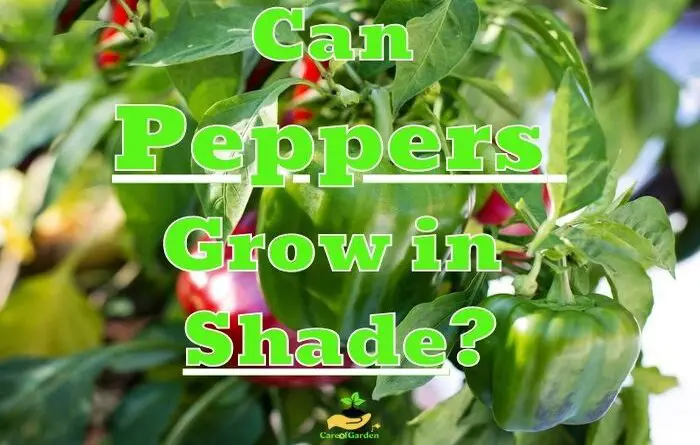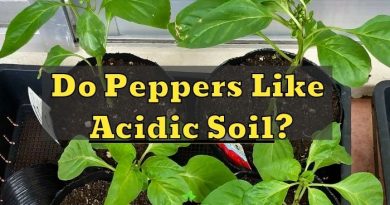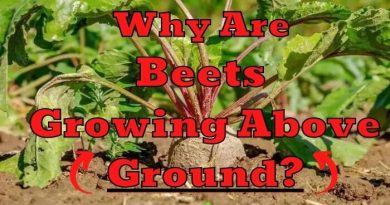Can Peppers Grow in Shade? (Surprising Answer)
Pepper plants are a common addition to gardens, but can they grow in the shade? In this guide, we’ll explore the factors that affect their growth in shaded areas and offer tips for successfully growing peppers in less sunny conditions.
Read on to learn how to cultivate shade-tolerant pepper plants for a bountiful harvest.
Can Peppers Grow in Shade?
Yes, peppers can grow in partial shade, but they generally require full sunlight of at least 6–8 hours of direct sun per day to produce the best yield. While peppers can survive in low-light conditions, they may not produce as much fruit or vegetables. When growing peppers indoors, LED grow lights or fluorescent bulbs are recommended for the best results.
If grown in too much shade, the pepper plants may become leggy and fail to produce peppers. So, it is best to grow peppers in full sunlight for optimal growth and fruit production.
| Pepper Varieties that can Grow in Shade or Low light | Hours of Direct Sunlight Required |
|---|---|
| Trinidad Perfume | Partial shade with at least 4-6 hours |
| Poblano | Partial shade with at least 4-6 hours |
| Cubanelle | Partial shade with at least 4-6 hours |
| Hungarian Wax | Partial shade with at least 4-6 hours |
| Jalapeno | Partial shade with at least 4-6 hours |
| Anaheim | Partial shade with at least 4-6 hours |
| Serrano | Partial shade with at least 4-6 hours |
| Shishito | Partial shade with at least 4-6 hours |
| Thai Hot | Partial shade with at least 4-6 hours |
| Tabasco | Partial shade with at least 4-6 hours |
| Fish | Partial shade with at least 3-5 hours |
| Jimmy Nardello | Partial shade with at least 3-5 hours |
| Padron | Partial shade with at least 3-5 hours |
| Cherry Bomb | Partial shade with at least 3-5 hours |
| Chinese Five Color | Partial shade with at least 3-5 hours |
| Gypsy | Partial shade with at least 3-5 hours |
| Marconi | Partial shade with at least 3-5 hours |
| NuMex Twilight | Partial shade with at least 3-5 hours |
| Purple Beauty | Partial shade with at least 3-5 hours |
| Sweet Banana | Partial shade with at least 3-5 hours |
https://www.uidaho.edu/extension/publications/bul/bul974
Peppers, like other plants, require sunlight for photosynthesis, the process by which they convert light energy into the nutrients they need to grow.
However, the amount of sunlight a pepper plant needs depends on factors such as variety, light intensity, and duration. Let’s look at these factors in more detail.
Factors Affecting Pepper Growth in Shade
- Variety: Different pepper varieties have varying tolerances for shade. For example, some hot pepper varieties, such as jalapenos and habaneros, tend to be more shade-tolerant than bell peppers, which require more sunlight to produce sizable fruits.
- Light Intensity: Even in shaded areas, the intensity of available light can differ. Dappled shade, where sunlight filters through tree canopies or other structures, can provide enough light for some pepper varieties to grow.
- Duration: Pepper plants generally need at least 6 to 8 hours of sunlight per day. In shaded areas, they may still grow, but their growth may be stunted, and they may produce fewer or smaller fruits.
Tips for Growing Peppers in Shade
- Choose Shade-Tolerant Varieties: Opt for pepper varieties that are known to be adaptable to lower light conditions, such as jalapenos or habaneros. Look for descriptors like “shade-tolerant” or “partial shade” when selecting seeds or seedlings.
- Maximize Available Light: Position your pepper plants in areas that receive the most sunlight throughout the day, even if it is dappled or indirect. This may involve regularly monitoring sun patterns in your garden and adjusting plant locations accordingly.
- Use Reflective Materials: Adding reflective materials, such as aluminum foil or white plastic, around your plants can help increase the amount of light they receive. This can be particularly useful in garden beds or containers that are predominantly shaded.
- Ensure Proper Nutrition: Providing your pepper plants with the right nutrients, such as a balanced fertilizer, can help them cope better with less-than-ideal light conditions. Follow recommended feeding schedules and adjust as needed based on plant growth and overall health.
Benefits and Drawbacks of Growing Peppers in the Shade
Growing peppers in the shade have advantages and disadvantages:
Benefits
- Reduced Heat Stress: In hot climates, excessive heat can cause pepper plants to suffer from heat stress, resulting in lower yields. Growing them in the shade can help protect them from extreme temperatures, ensuring a healthier and more productive crop.
- Less Water Evaporation: Shaded areas tend to have lower rates of water evaporation, which means the soil retains moisture for a longer period. As a result, you may need to water your pepper plants less frequently, conserving water and reducing your overall gardening workload.
- Improved Pest Management: Some pests, such as aphids and spider mites, prefer hot, sunny conditions. Growing peppers in the shade can help deter these pests and reduce the need for chemical interventions.
Drawbacks
- Reduced Fruit Production: Pepper plants grown in the shade may produce fewer fruits due to a lack of sunlight needed for proper growth and development. This can be particularly problematic for larger pepper varieties, such as bell peppers.
- Increased Risk of Diseases: In shaded areas, increased humidity and lower air circulation can promote the growth of mold, mildew, and other fungal diseases that can harm pepper plants. Regularly inspecting your plants and implementing preventative measures, such as proper spacing and pruning, can help mitigate these risks.
- Slower Growth: Peppers grown in the shade may take longer to reach maturity and produce fruit. This can extend the overall growing season, which may be a disadvantage if you have a limited growing window or are trying to coordinate your harvest with other crops.
Can Peppers Grow in Indirect Sunlight?
Indirect sunlight refers to light that has been diffused or reflected off surfaces rather than coming directly from the sun. Pepper plants can grow in indirect sunlight, but their growth and fruit production may be affected, depending on the intensity and duration of the light they receive.
Growing peppers in indirect sunlight can be a viable option, especially if you live in an area with limited direct sunlight or have limited garden space.
To maximize your pepper plants’ chances of success in indirect sunlight, consider the following tips:
- Choose Smaller or Shade-Tolerant Pepper Varieties: As mentioned earlier, some pepper varieties are more adaptable to lower light conditions. Opting for these types of plants can improve your chances of a successful harvest.
- Use Reflective Materials: Place reflective materials near your pepper plants to help increase the amount of indirect sunlight they receive. This can be particularly helpful in urban gardens or balconies where direct sunlight may be limited.
- Monitor Plant Health: Keep a close eye on your pepper plants and watch for signs of stress or disease, such as yellowing leaves or stunted growth. Address any issues promptly to ensure the health of your plants.
- Be Patient: Remember that peppers grown in indirect sunlight may take longer to mature and produce fruit. Be prepared for a potentially extended growing season and adjust your expectations accordingly.
Can Bell Peppers Grow in Shade?
Bell peppers can grow in partial shade, however they need at least 6-8 hours of direct sunlight per day for optimal growth and fruit production. Some sources even suggest that bell peppers can grow better in the shade, particularly in hot summer climates where the sun can be too intense and cause damage to the plants.
Commercial bell pepper growers in the Southeast region often struggle with brutal summer temperatures that can make growing anything impossible so it is required to provide some shade to the plants can help to mitigate these issues and improve growth and yield.
Also keep in mind that is important to choose bell pepper varieties that are tolerant of shade and to provide adequate soil and water for healthy growth.
Can Chili Peppers Grow in Shade?
Most chili peppers do not grow well in the shade because they require at least 6-8 hours of sunlight per day for photosynthesis, which is the process that allows plants to absorb sunlight and convert it into energy to fuel growth and fruiting. Most chili pepper plants grown in partial shade, won’t be as productive as they would be in a sunny spot.
Can Jalapeno Peppers Grow in Shade?
While Jalapeno Peppers can tolerate some shade, it is not ideal for their growth. According to The Spruce, Jalapeno Peppers grow best in full sun, which means at least six hours of direct sunlight on most days.
If they grow in the shade, the plants will be spindly and the fruit production will diminish. Therefore, it is recommended to provide Jalapeno Peppers with as much sunlight as possible for optimal growth.
Conclusion
In conclusion, while peppers generally require full sunlight to grow and produce optimal yields, they may still grow in partial shade. However, it’s important to note that the plants may not be as productive as those grown in full sun.
If you want to grow peppers in a shady area, consider choosing varieties that are more tolerant of shade and ensure that they still receive at least a few hours of sunlight each day. With proper care and attention, you can still enjoy a bountiful harvest of delicious chili peppers even in less-than-ideal growing conditions.




